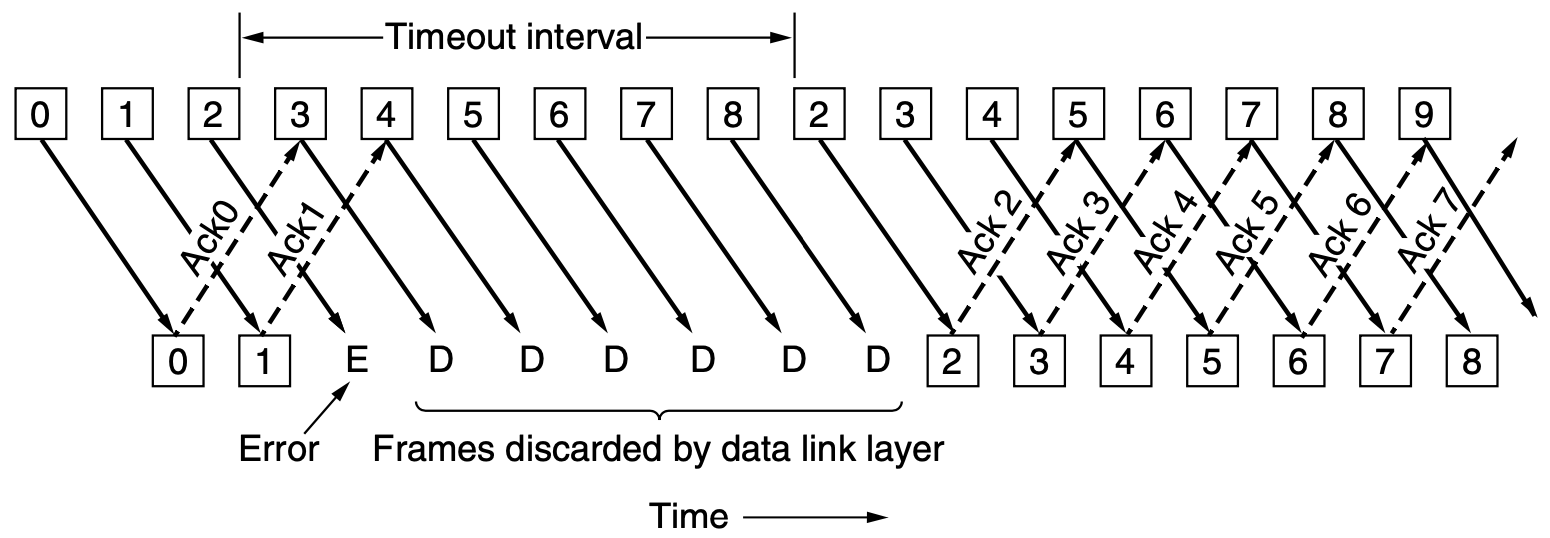

|
CITS3002 Computer Networks |
| ← prev | next → |  CITS3002
CITS3002 |
 help3002
help3002 |
 CITS3002 schedule
CITS3002 schedule |
|||
The go-back-N ProtocolThe first solution, termed go-back-N, requires the receiver to simply discard all frames after a bad one.

Notice the waste of bandwidth - because the receiver only buffers a single frame, all frames transmitted after a lost (or corrupted frame) require later re-transmission - we go back N frames and then restart transmitting.
CITS3002 Computer Networks, Lecture 3, Data Link Layer protocols, p26, 13th March 2024.
|